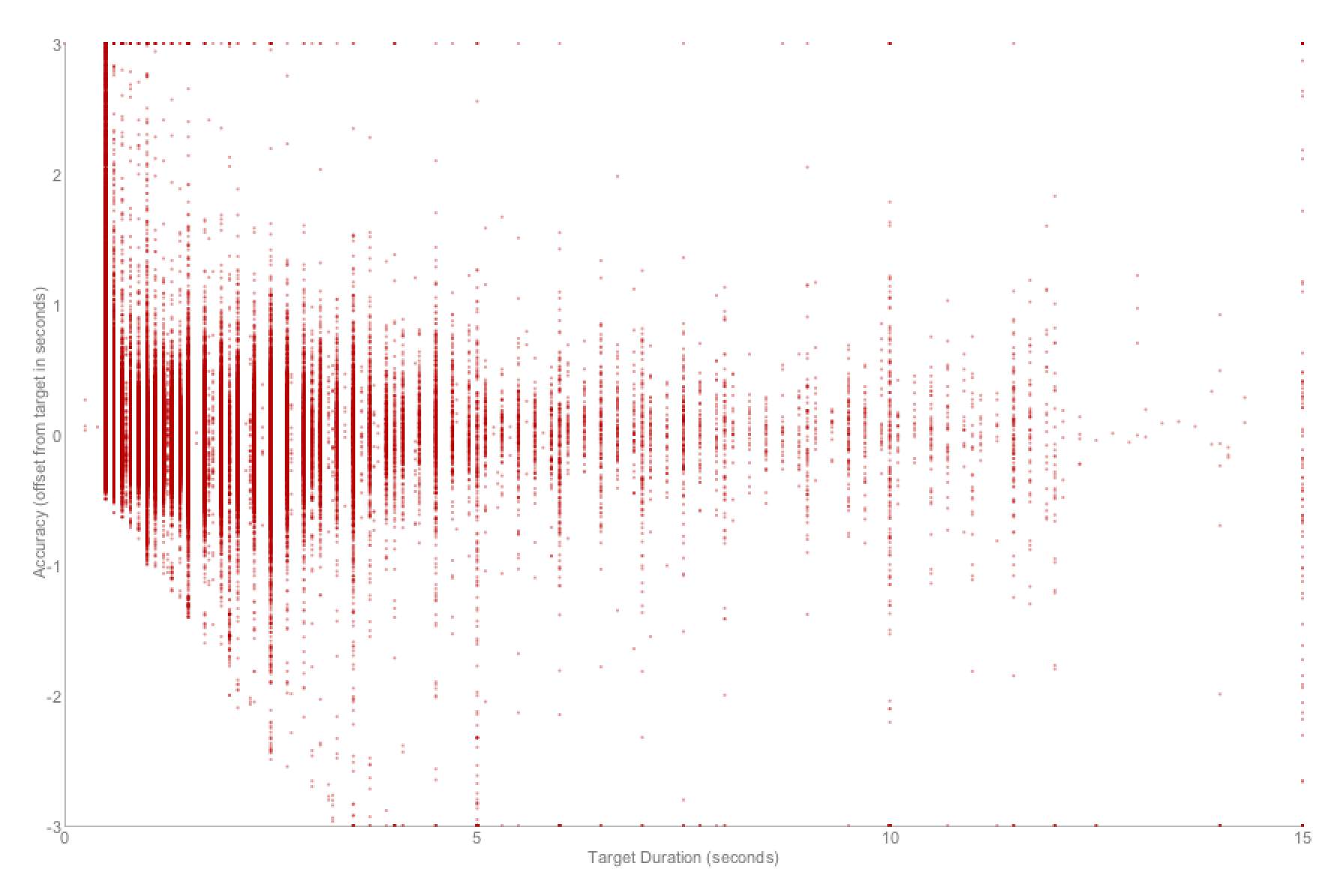If we handed out stopwatches to a million people and asked them to intuitively time one second, where would we land? What would the average be? the median? deviations? We all know what we think one second feels like, but do we know how accurate that feeling is?
Tempra encourages users to train their internal time production in sub-second to minute long durations. It’s a lightweight casual game that’s very much like a stopwatch, except you can’t see the numbers.
To play you must rely on your internal sense of time. The goal is to get as close to a given time increment as possible. Each level in the game increases in difficulty by lengthening the duration you have to model in your head. Each trial of the game requires greater concentration, encouraging you to deepen your inward focus and continuously sharpen your internal sense of time.
Practice, like with any other skill, yields higher accuracy. However, we don’t know if accuracy is generalizable. For example, if your sense of two seconds is super accurate, does that also mean you’re good at dodging traffic?
We also don’t know if time production is a skill that you can exercise like a muscle. Can you strengthen that muscle? Probably. Does it atrophy if it isn’t exercised explicitly? We don’t know.
If internal time production is a muscle that you can exercise, and if exercising that muscle has generalizable attributes, then practicing with Tempra may have profound effects on your health and well-being.








